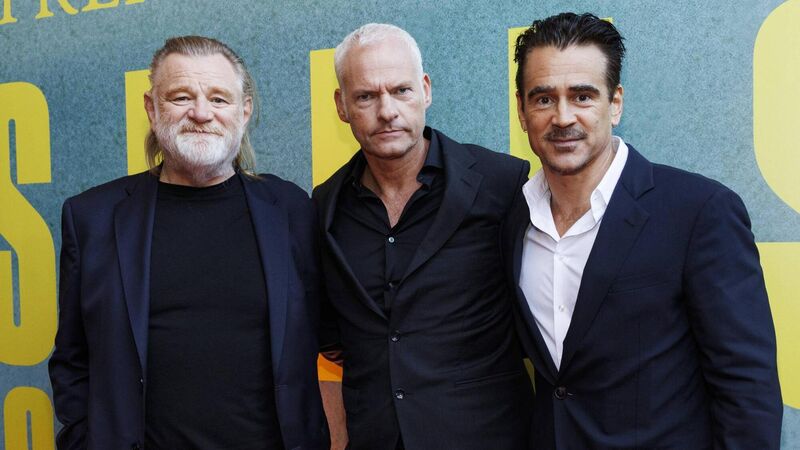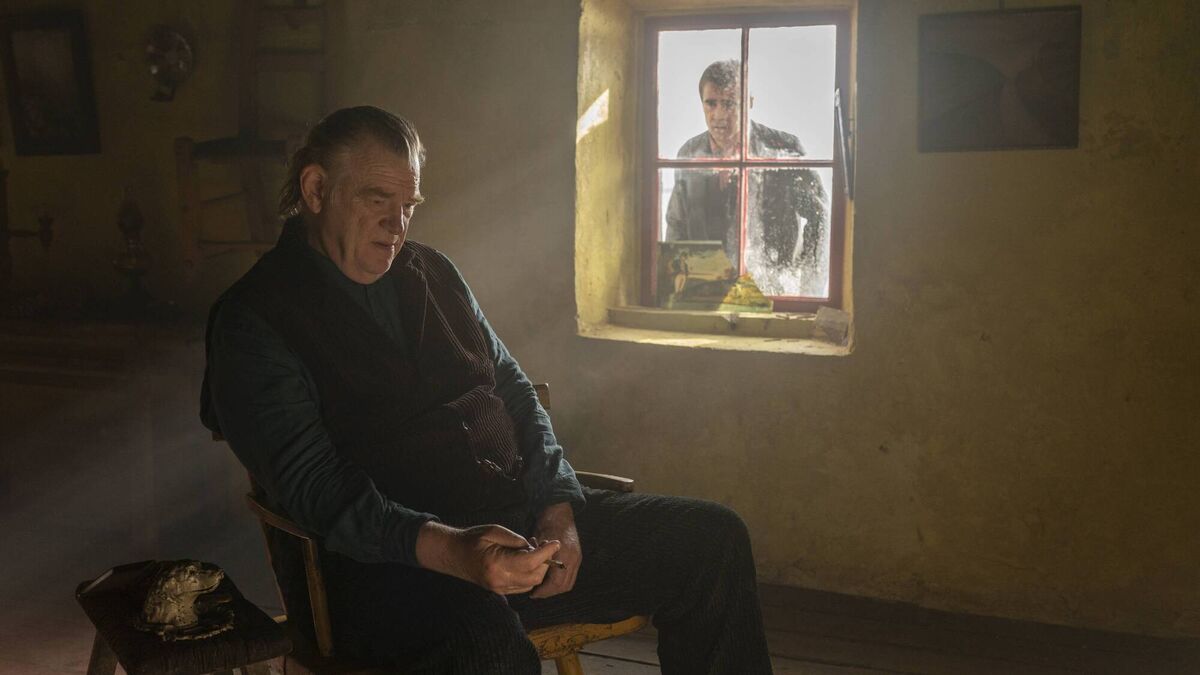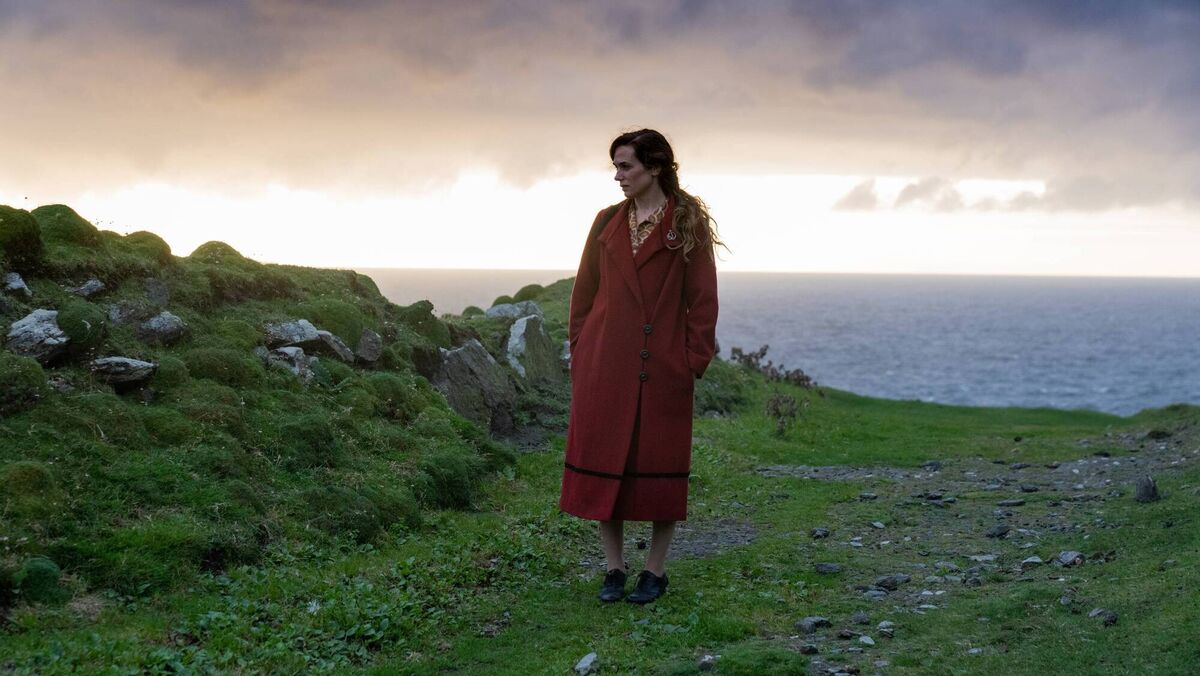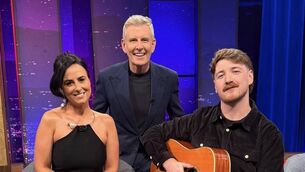The Banshees of Inisherin: Martin McDonagh on childhood trips that inspired his film

Brendan Gleeson, Martin McDonagh and Colin Farrell at the Irish premiere of The Banshees of Inisherin at the Light House Cinema, Dublin. Picture: Andres Poveda
Irish Oscar hopes are high for The Banshees of Inisherin, a fierce new tale from Martin McDonagh made and set in the West of Ireland.
The writer-director is reunited with his In Bruges stars and two of Ireland’s most-loved actors, Colin Farrell and Brendan Gleeson, for the story of what happens when one man abruptly pulls the plug on a lifelong friendship.
As awards season heats up, there has been almost universal praise for the film, set in 1923, of two men in sudden conflict. Though many of his award-winning plays have been set out West, this is McDonagh’s first feature film shot in Ireland - and the London-Irish filmmaker turned to his mind’s eye when making a movie of such stark beauty.
“Mum and dad are from Sligo and Galway. I think my first trip to Inishmore was when I was six,” he recalls. “I still have quite vivid memories of getting in the ferry but you had to climb off the ferry into a smaller boat to get onto the pier back then. I remember the danger of that, and how clear the water was, and the beauty of the island."
As a child, McDonagh spent regular periods in his parents' home counties. “Even as a kid, I thought capturing this in photographs seemed like it could be interesting to me. So when you get into a position of knowing you're going to make an Irish film, you have a catalogue of all the most beautiful places in your head. The Aran Islands were uppermost,” says McDonagh, 52.
Shot on Inishmore and up the Mayo coast on Achill, McDonagh’s memories have helped bring to life one of the best-looking Irish films ever seen on screen, as two old friends fight a very personal battle while the Irish Civil War rages on the mainland.

Set on the fictional island, Farrell and Gleeson play lifelong pals Pádraic and Colm, whose daily routine includes afternoon pints in the local at 2pm. But one day, the older man tells his devastated friend: “I just don’t like you no more”, setting the tone for a tale of a pitch-black tale by turns absurd, melancholy and hilarious.
The fact that the weather showed up during the summer 2021 shoot led to McDonagh pivoting his production to make the most of the big western skies. “We got the most beautiful weather and we tried to structure the schedule so that we could capture that. We built places where you could film inside but if it was a beautiful day you can just run outside and do the outside scenes with ten minutes’ notice. That's why we've got so many sunset shots and so many scenic shots that look beautiful at magic hour.”
Banshees is widely tipped to become a major player as the Oscars approach. Both Farrell’s performance and McDonagh’s screenplay won the top awards at the prestigious Venice Film Festival, while pundits are also predicting buzz for Gleeson and Tipperary actress Kerry Condon, terrific as Pádraic’s sister, Siobhán.
An Oscar-winner for his short film Six Shooter, McDonagh was also nominated for his screenplays for both In Bruges and Three Billboards Outside Ebbing, Missouri, the latter of which won an Oscar for its lead star, Frances McDormand. Yet as a younger man growing up in London, he struggled to find his voice as a writer and had no sense that a successful career as a filmmaker could be possible.
“I started trying to write films first and radio plays, other things,” he says. “None of that went well, but the writing kind of got better over the years.
“Still, it felt like you were buying a lottery ticket rather than starting a career. Because you've got no connection to the arts, no agent even. And as a working class kid, it's not even in one’s... you don't know anyone who's ever been a writer or a painter, or even a musician. I didn't know anyone who was even in a band, let alone a playwright. So you're kind of shouting into the wind for a number of years — until the work starts getting better, and you have more of a confidence in what it is.”

It’s a surprising revelation from a storyteller who is so revered. And while McDonagh says he will continue to write plays, he’s now ready to focus more on his filmmaking career — and feels fortunate he has the opportunities to do so.
“Even through doing the plays, films were always: ‘My gosh, I never thought I'd even be in a position to make one film’. But now having done four and being happy with them, too, it's like a dream scenario I never imagined. Every day, I kind of know how lucky that that is and smile about it.”
In a long-term relationship with fellow writer and Fleabag creator Phoebe Waller-Bridge, McDonagh has long wanted to make a film set in the West. Since his parents moved back there in the early 1990s, he comes to Galway and Connemara three or four times a year.
He wrote the film with Farrell and Gleeson in mind, as well as the supporting roles for Barry Keoghan and Kerry Condon, who he’d worked with in theatre years earlier. Just like In Bruges, the dynamic between the two lead actors is special.

“I think the love between them is always there, even if it's a story like this, where the love is gone. On set, they want to help each other as actors and want the best for each other, and want to take care of each other in each other's process.
“If you've got two scene partners who care about that stuff, the sum of the parts is going to be even possibly greater than individually. There's that love, and respect and joy. They're very fun people to be around. That's always palpable on set, which puts the crew at ease too, and it makes the whole thing more like family.”
While there’ll be lots of awards-season chatter about the human acting, the four-footed presence and performances in Banshees are remarkable. From Pádraic’s adorable companion Jenny the donkey, to Colm’s beloved sheepdog, to the white pony who features in some of the film’s most shocking moments, it comes as no surprise that McDonagh is an animal lover.
“Yes, totally,” he says. “I'm a vegetarian or more a pescatarian these days but in this, very much so.
“Obviously the donkey is central to it. But the pony became more central during the making of the film because she was such a sweet, gentle presence that we added her [to a key scene]. We even just cut into her for certain moments and the dog too, to see the story through their innocent eyes.
“It felt to me, and it was more in the edit than anything else, that it's like three animals seeing how stupid these human beings are. That they're killing each other, basically, and there's no need.”
- The Banshees of Inisherin is in cinemas from Friday, October 21






